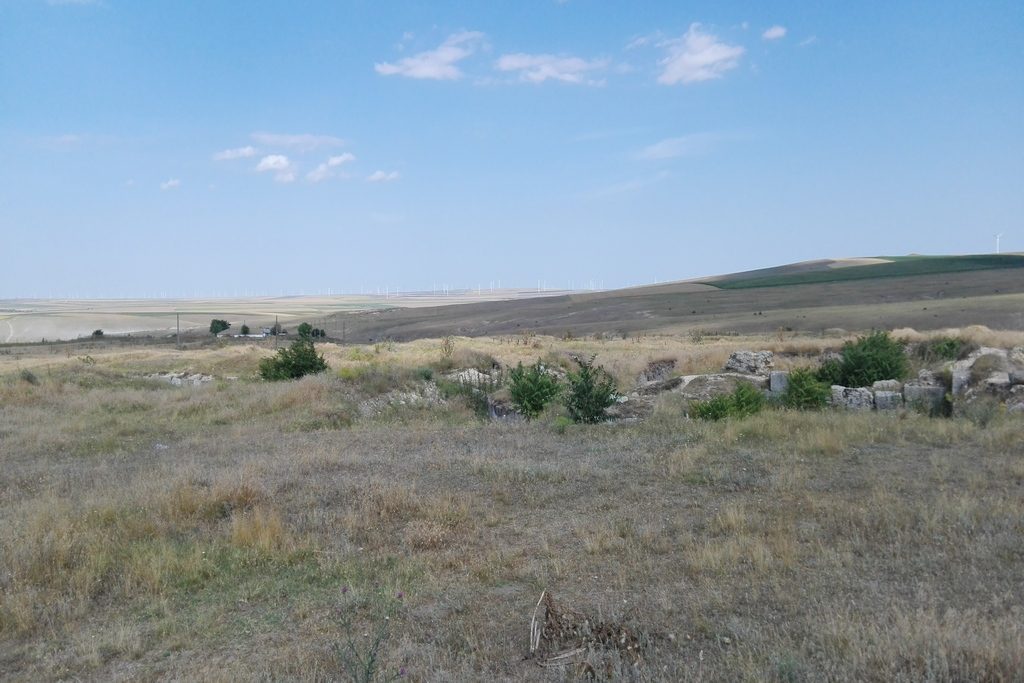

The Latin name “Ulmetum” means in Romanian “elm forest”. The ruins of the castrum of Ulmetum have been discovered by Vasile Pârvan, starting with his first campaign of archeological diggings, from 1911, and comprise inscriptions and statues from the era of the Roman decadence. The archeologists from Constanța established the fact that, by the end of the IVth century, the Ulmetum citadel accommodated hundreds of federated Goths, who had received the right to establish in this area. On the occasion of the diggings, in the center of the fortifications was found the tomb of a Germanic noble, who contradicts the hypothesis that the necropolises were emplaced only outside the localities.
Situated at the north-west margin of the locality Pantelimonu de Sus, the citadel was built at the end of the IVth century and at the beginning of the Vth century, probably by Theodosius the Great.
Among its numerous buildings with a varied number of chambers, as the military barracks are, it comprises a basilica and probably, a military command. With some disruptions, it lasted until the end of the VIth century and the beginning of the VIIth century, at the end of the Roman – Byzantine era.
It is a fortification integrated at the small or average scale, which slowly became a fortified establishment and which, in the Vth century A.D., was attacked and almost destroyed by the successive hunnish waves.
The historians from Constanța discovered the fact that after the three hunnish waves during 420 – 450, Ulmetum entered in a decline, having in the following century a stormy history. Therefore, there were found reduced traces of living, then, by the end of the VIth century, the fortification was abandoned. Justinian (525 – 565) ordered at some time the reconstruction of the citadel, and the Byzantine militaries caught and punished the gangs of thieves who were making damages near the citadel.
Among the military commands quartered throughout the time, there can be remembered Cuneus equitum scutariorum and Paedatura lanciarim iuniorum. The plan of the establishment has the shape of a right triangle, with a curbed diagonal parallel. On the edges, the fortification is provided with three round towers. Also, there are two entrances flanked by two towers with the frontal edge semi-circular, at which there are added two more towers of the same shape, one on each of the two sides of the citadel. After some opinions, the masters who worked at building the fortification would have come from the Thracian part, existing numerous similarities of plan with other centers from the same period built in Thrace.
The systematic archeological research in the citadel continues year after year. The important discoveries made by the archeological team at Ulemtum live up to a better improvement and popularization of the site. In order to realize this objective, there are necessary the cleaning, restoration and building inside the citadel and restoring the monuments from the interior.
